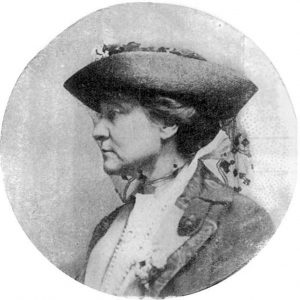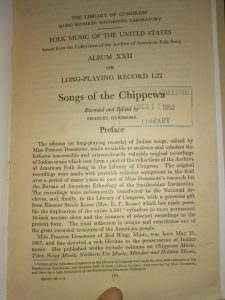Natalie Curtis Burlin (1875 – 1921) was an American ethnomusicologist and musician whose work centered around preserving and archiving African-American and Native American music, art, and culture. In her 1913 article “The Perpetuating of Indian Art”, she appeals to the American governmental systems that are trying to erase Native culture altogether by assimilation into Western culture. While Curtis’ intentions were likely to help the Native American peoples, her argument against assimilation focuses largely on how Indian culture benefits white people. In the opening sentence of her article, she states:
“Those who have worked among the American Indians, and have learned to respect the thought, the art, and many of the religious ideas of this most interesting people, must feel a sense of almost personal gratitude to the present Secretary of the Interior for having appointed a Supervisor of Music in the department of Indian Education, whose duties shall be to ‘record native Indian music, and arrange it for use in the Indian schools.’”1
While Curtis continuously raves about the beauty and importance of Native Culture throughout the article, her argument always boils down to this: since Native culture is so beautiful, we can’t let it vanish completely because we can learn from them to help better ourselves and our Western culture.
This is a common theme among supposedly well-meaning American ethnomusicologists at this time and throughout history. Ethnomusicologists like Alice Fletcher and Natalie Curtis tended to use language that is insensitive and dehumanizing towards the cultures they were studying. Fletcher was of the belief that “education was of primary importance for Native Americans, as it would ease assimilation into ‘civilized’ culture.”2 Curtis referred to Native Americans as “underdeveloped”, “primitive”, and “noble dogs”.
Not to say that Curtis didn’t accomplish good things in her work – she used her personal relationship with Theodore Roosevelt to aid in the removal of a longtime ban on Native American music, 3and she strongly advocated against the erasure and white-washing of Native culture. Whatever the intentions, it’s important to analyze and acknowledge ethnomusicologists of the past so we can recognize where they failed and do better in the future. What we can learn from Curtis and others is that It’s important to ask yourself, whose betterment is the work intended for?
2 Haynes, Caitlin T, and Katherine Crowe. “Alice Cunningham Fletcher and Francis LaFlesche in the Transcription Center.” Smithsonian, 2023, transcription.si.edu/articles/alice-cunningham-fletcher-and-francis-la-flesche-transcription-center.
Britannica, The Editors of Encyclopaedia. “Natalie Curtis Burlin”. Encyclopedia Britannica, 22 Apr. 2023, https://www.britannica.com/biography/Natalie-Curtis-Burlin. Accessed 20 September 2023.


